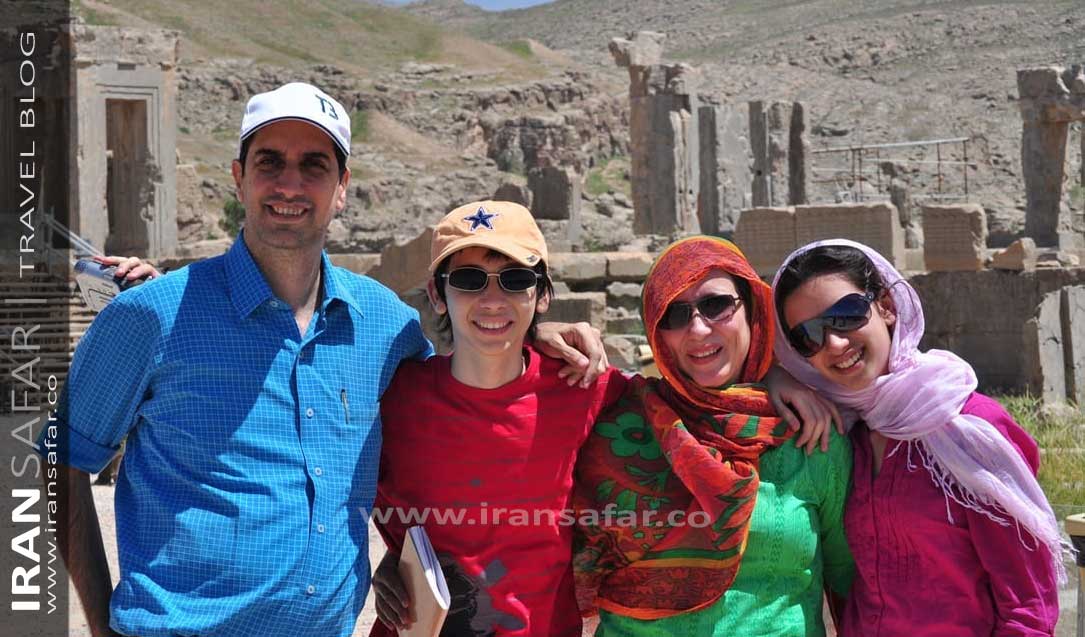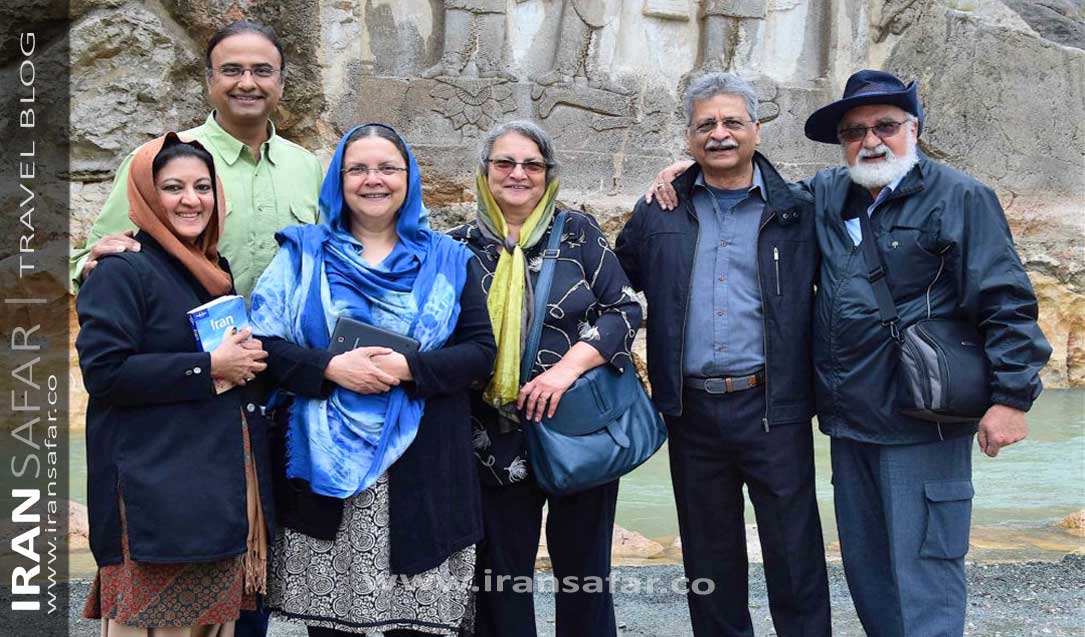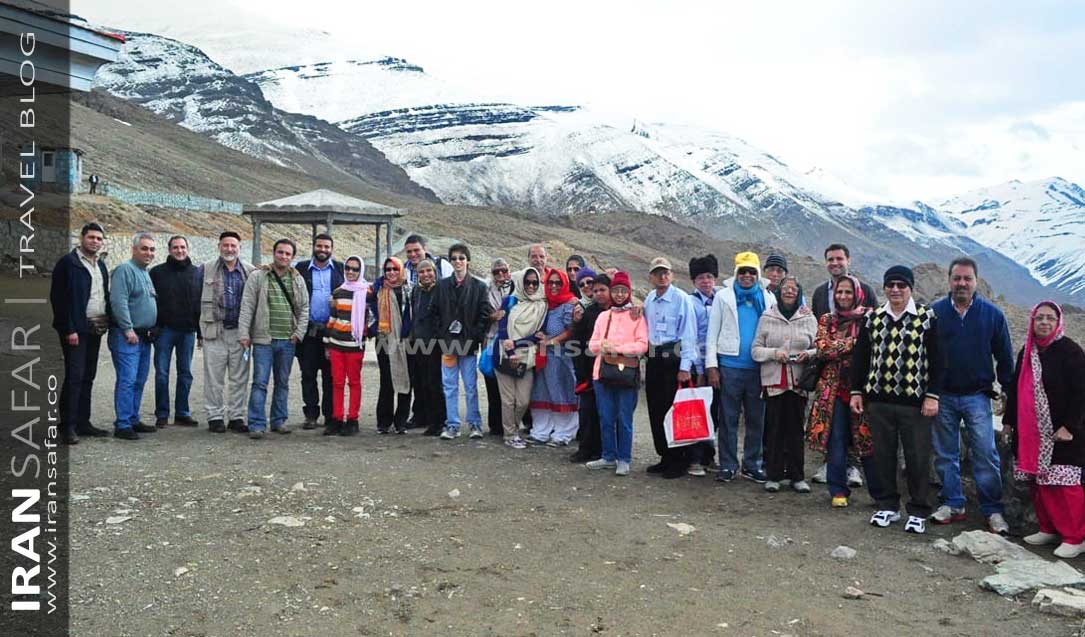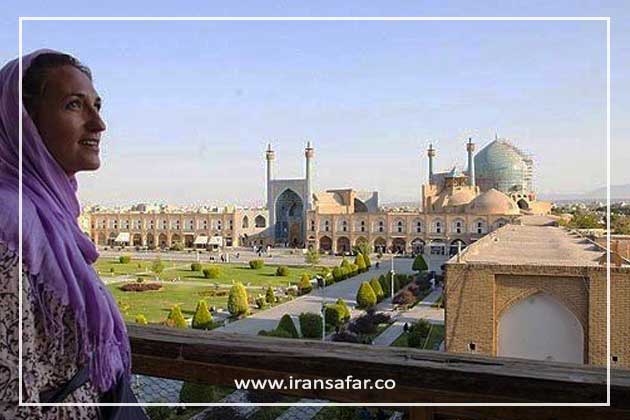If you’re an Indian traveler looking for a unique and culturally rich destination, then look no further than Iran. This beautiful country offers a wealth of experiences that will leave you with memories to last a lifetime. However, before you embark on your journey, it’s important to be well-prepared and informed. In this blog post, we will provide you with some essential tips and answer frequently asked questions about travelling to Iran from India.
 Travelling to Iran from India
Travelling to Iran from India
Cultural link between Iran and India
The cultural relations between Iran and India is a subject that has deep roots in the history of the two nations and is not related to the new era. For thousands of years, the nations of Iran and India have had many moral and spiritual connections and dependencies, which have been manifested in various cultures, arts and sciences.
According to historical evidence, Iran and India were in contact with each other even before the arrival of Aryan tribes and the formation of Aryan civilization, and after the arrival of Aryan immigrants, they had mutual and influential relations. In other words, few ethnic groups have been as close to each other as Iranians and Indians, and researchers believe that these two ethnic groups lived together for a long time and then separated from each other, but despite this, there was never a complete separation.
Iran Travel Tips & Requirement for Indians
Are you planning an exciting trip to Iran? As an Indian traveler, exploring the beauty and culture of Iran can be a rewarding experience. However, to ensure a smooth and enjoyable journey, it’s crucial to be well-prepared.

Iran Visa Requirements for Indians
Before you start planning your trip, make sure to check the visa requirements for Indian citizens traveling to Iran. As of Feb 2024, Indian passport holders do not require a visa for up to 15-day stay in Iran. This visa waiver program allows for a 15-day stay (non-extendable) within each period of 6 months, exclusively for tourism purposes. Additionally, please be aware that for Indian nationals, this privilege is applicable only for those entering Iran via air border. In case of a longer visit plan, the visa process can be done through an Iranian certificated travel agency and then the Iranian embassy or consulate. It’s advisable to start the visa application process well in advance to allow for any potential delays.
VOA – Iran visa on arrival for Indians (Update FEB 2024)
The Iran VOA is NOW available for citizens form India.
In case of a +15 day travel plan, India passport holders are eligible to apply for Iran Airport Visa (VOA). In order to eliminate the risk of rejection or refusal, it’s recommended to apply your visa in advance (as instructed below)
Visa process for Indian Citizens
In recent years, due to the growing friendship between India and Iran, the governments try a lot to ease the visa process for Indian citizens. You can obtain a 40-day tourist visa for Iran at one of the Iranian embassies OR at any arrival airport in Iran.
Iran Safar Travel Co. will arrange your Iran visa in a few simple steps within 3-7 working days:
Step 1: Submit the visa application form
For submitting the from, you will also need to upload following documents:
1: A scanned copy of the first page of your passport, needs to be valid at least for 6 months.
2: A scanned face photo in size of 4 cm in 6 cm.
Iran Visa Application Form
Step 2: Starting visa application
After submitting the application, our colleagues in the visa department apply for your visa at the right time.
Step 3: Receiving a visa approval
After 3-7 working days, you will receive a visa approval which is officially called Iran Visa Grant Notice . This document means that your visa has been approved.
Step 4: Visa
After you receive the visa approval letter, you can easily refer to the relevant embassy/consulate or to the arrival airport to receive your visa.
Note: As of the latest regulations of Oct 2023, Iran airport visa (visa on arrival) is applicable for Indian passport holders.
Your visa is valid for 30 days and it is also possible to extend it, although it can be said that with this type of tourist visas you can stay in the country for 30 days.

Read More : Iran Visa Application Guideline (2024)
Iran Visa fee for Indian citizens
Consulate visa fee (In Delhi or Mumbai): ₹ 6300
Consulate visa fee (In other countries): € 60.00 – only in Euro, Only in cash
Airport visa fee: € 90.00 – only in Euro, Only in cash
Flights and Transportation
There are several airlines operating flights from India to Iranian cities which are mostly to the capital, Tehran, but also to other main cities like Shiraz, Isfahan and Mashhad. You can fly to Iran with Iranian Airline Mahan Air from Delhi, also Emirates, Etihad, Fly Dubai, Qatar Airways, Al Arabia airlines are available. It’s recommended to book your flights in advance to secure the best deals.
India to Iran Flights
The most famous Iranian airlines that offer different options for flying directly from India to Iran are Iran Air and Mahan Air. Iranian flights have two important advantages, first, they fly directly from Delhi and Mumbai to Tehran, so you’ll save on time, and second, they are the most affordable options among all other airlines that operate flights to/from Iran. The options will be:
New Delhi (DEL) -Tehran (IKA) – New Delhi (DEL) with Mahan Air
Mumbai (BOM) – Tehran (IKA) – Mumbai (BOM) with Iran Air
So, no matter where you are in India Mumbai, Delhi, Chennai, Kolkata, Ahmedabad, Bangalore, or Hyderabad, there is always a suitable way to fly to Iran.
Once you arrive in Iran, the transportation system is well-developed, with options like taxis, buses, and trains available for traveling within the country. It’s a good idea to familiarize yourself with the local transportation options and plan your itinerary accordingly.
Also Read – Train Travel in Iran
– Domestic Flights in Iran
Since Iran is a vast country, not as big as India of course, you may also need to book a domestic flight for your trip to Iran. Booking domestic flights in advance would be a big step to have a hassle-free trip. To do so you will need to contact a local travel agency to help you choose a suitable flight, transfer the money, and book it. At friendlyiran, we have tried to make this easier and prepare the online flight booking system for Iran visitors. I suggest to check this blog to gain all the required details and book the domestic flight which suits your Iran itinerary:
– Driving in Iran
If you plan to rent a car and drive in Iran, be prepared for different driving conditions and traffic patterns. Ensure you have an International Driving Permit (IDP) and familiarize yourself with local traffic rules.
Currency and Money Matters
The official currency of Iran is the Iranian Rial (IRR). It’s important to note that due to international sanctions, foreign credit and debit cards are not widely accepted in Iran. Therefore, it’s advisable to carry sufficient cash in the form of US dollars or Euros, which can be exchanged at authorized currency exchange offices or banks upon arrival. Be sure to keep your money in a safe place and be cautious of pickpockets in crowded areas.
Dress Code
Iran is an Islamic country with semi-conservative dress codes, especially for women. It’s important to respect the local culture and adhere to the dress code guidelines. Women are required to cover their hair with a headscarf (hijab) and wear loose-fitting clothing that covers their arms and legs. Men should also dress modestly and avoid wearing shorts or sleeveless shirts in public. Additionally, it’s important to be mindful of local customs and traditions, such as avoiding public displays of affection.
Language and Communication
The official language of Iran is Persian (Farsi). While English is not widely spoken, especially in rural areas, you can still find English-speaking individuals in tourist areas and major cities. It’s helpful to learn a few basic Persian phrases or carry a translation app to facilitate communication during your trip.
Iranian Food
India and Iran have been influenced by each other historically architecturally and have passed on culinary treasures to each other. A lot of the Indian cuisine has its roots in middle eastern cooking.
Although Iranian dishes are relatively not spicy, the cooking techniques and ingredients used in Iran and India are quite similar. Use of rice, lamb, chickpeas, fruits like pomegranate, figs, common vegetables, chickpea flour etc. makes the cuisines of India and Iran strikingly similar. Pulaao In India is Polo in Iran, kebab is a common word and halva – a snack made in both countries using a little different ingredient. Biryani is believed to have originated in Persia and was brought to India by the Mughal emperors. The name “Biryani” comes from the Persian word “Birian,” meaning “fried before cooking.” – Pork is noticeably absent in both cuisines and they obviously enjoy more lamb!
- What is the biggest difference in Indian and Persian Cuisine?
While we may notice that there are many similarities and influences between Indian and Persian cuisines, they are also very distinct in terms of flavors. Indian food, for instance, despite its many regional variations, is defined by its use of complex combinations of spices. It is common for Indian spice mixes to go upward of five combinations, sometimes combining ten or more. Garam masala is a popular spice mix that contains cardamom, cinnamon, and clove, plus other regional spices or according to personal taste.
On the other hand, Persian cuisine is dominated by the heady aromas of Persian spices such as saffron which is their most prized and coveted spice, as well as desserts fragrantly scented with rosewater.
Also Read – What to Eat in Iran?
Safety in Iran
Iran is known for its safety, but like any other destination, it’s essential to remain vigilant. Keep an eye on your belongings, avoid walking alone at night in unfamiliar areas, and follow local advice.
Also Read – Is Iran Safe to Travel in 2023?
Cultural Etiquette
Understanding and respecting cultural etiquette is essential when traveling to Iran. Here are some key cultural etiquette tips for visitors to Iran:
Greeting: Iranians are known for their warm hospitality. When meeting someone, especially for the first time, a firm handshake is a common greeting among men. However, when greeting someone of the opposite gender, it’s more polite to wait for them to initiate the greeting. A verbal greeting with “Salaam” (hello) is customary.
Politeness: Politeness and respect are highly valued in Iranian culture. Using honorific titles like “Mr.” or “Mrs.” when addressing people is a sign of respect. Addressing someone by their first name is usually reserved for close friends and family.
Shoes: When entering someone’s home, it’s customary to remove your shoes at the entrance. It’s a sign of cleanliness and respect for the homeowner.
Public Behavior: Public displays of affection are not appropriate in Iran. Holding hands in public is generally acceptable but avoid kiss and long and deep hugs.
Photography: Always ask for permission before taking photos of people, especially in rural areas. Some individuals may be sensitive to being photographed, so it’s important to respect their privacy.
Tipping: Tipping is customary in Iran, especially in restaurants and for services like guided tours. It’s a gesture of appreciation for good service.
Internet Access
Stay connected with friends and family by using Wi-Fi available in hotels and cafes. Consider purchasing a local SIM card for mobile data when you are on the go.
Traveling to Iran from India offers a unique opportunity to explore a country steeped in history, culture, and natural beauty. By following these tips and being respectful of local customs, you can ensure a memorable and enriching travel experience. So, pack your bags, get ready to immerse yourself in Iran’s wonders, and create lifelong memories.
 Khushroo’s Tips on Iran
Khushroo’s Tips on IranKhushroo Engineer is a graduate of the Stanford Business School. He worked with Lever Brothers in London and subsequently with Warner Hindustan and Cadbury India Ltd. in their Marketing Departments. He also worked with the Chanrai Group in Lagos, Nigeria. He is married and has two children. He currently resides in Nainital, India, and looks after the family business.
He and his family traveled to Iran with Iran Safar and gathered a travelogue that was sent to friends and family in order to introduce Iran. This article is an extract from a Christmas letter sent by Khushroo to friends and family, sharing the details of their experience about travelling to Iran from India.
Indian Embassy in Iran
https://www.indianembassytehran.gov.in/
Address : Embassy of India, 22, Mir Emad Street extlink (Corner of 9th alley), Dr. Beheshti Avenue, Tehran,
Postal Code: 1587736613.
Telephone : 0098-21-88755103-5 (General)
0098-21-88755102 (Visa Enquiry)
Fax : 0098-21-88755973
E-Mail : hoc.tehran@mea.gov.in (General)
cons.tehran@mea.gov.in (Consular)
com.tehran@mea.gov.in (Commerce)
Emergency Consular Help Number: +989128109115 (Not for Visa/ Business enquiry)
Consulate Zahidan Emergency Consular Help number: +989031015057 (Not for Visa/Business enquiry)
Bandar Abbas Consulate (For Indian Seafarers and fishermen): +987633618049, +987633618051, +989177699036, hoc.babbas@mea.gov.in
Travelling to Iran from India – FAQs
Q: Can I travel from India to Iran ?
A: Yes! Travelling to Iran from India is very easy. You will need a visa to visit Iran which is safely obtained through a local travel agency in 5 working days. There are several international flights to/from Iran every week and there are good quality Iran tours from India.
Q: Do Indians need visa to travel to Iran ?
A: Indian citizens can visit Iran for up to 15 days without requiring a visa. This policy applies to tourists traveling for tourism purposes and is non-extendable. Additionally, please be aware that for Indian nationals, this privilege is applicable only for those entering Iran via air border. In case you plan to visit Iran in more than 15 days time, you will require a tourist visa.
Q:Can Indian citizens extend their stay beyond 15 days in Iran without a visa?
No, Indian citizens must leave Iran within the 15-day visa-free period. If you wish to stay longer, you will need to apply for an appropriate visa through an Iranian travel agency, or Iranian Embassy in India before your trip.
Q: What documents are required for Indian citizens traveling to Iran?
For visits up to 15 days, Indian citizens need a valid passport with a minimum validity of 6 months beyond the date of entry into Iran. Additionally, travelers should have proof of accommodation, return/onward travel tickets, and Iran travel insurance.
Q: Is Iran safe for Indian travelers?
A: Iran is generally considered safe for travelers, including Indians. Iran is one of the safest countries according to direct experience of millions of travelers; However, it’s always recommended to exercise caution and stay updated on the latest travel advisories before your trip. But do not trust western media and try to get first-handed information from real sources. Since Iran is under US and EU sanctions, there is an attempt to deface the country’s reputation in terms of tourism and general safety. It is obvious that tourism can boost Iran’s economy and this is why the fake stories of unsafe situation are made up to stop keen people to go there. We recommend not to believe fake travel advice that are based on politics rather than reality!
Q: Can I fly to Iran with Air India?
A: Yes, but it wouldn’t be the shortest and cheapest flight. Mahan Air and Air Arabia are the cheapest ones.
Q: Is Iran cheap for Indians?
A: Iran is a relatively cheap country. It’s probably one of the most affordable destinations. However, you need to prepare financially for travelling to Iran from India.
Q: What are some must-visit places in Iran?
A: Iran is a treasure trove of historical and cultural sites. Some must-visit places include Tehran, Isfahan, Shiraz, Yazd, and Persepolis. Each city offers its own unique attractions, such as stunning mosques, ancient ruins, and vibrant bazaars.
Q: Is it necessary to purchase travel insurance before visiting Iran?
Travel insurance is mandatory for Iran visa process. It’s highly recommended to have comprehensive coverage for medical emergencies, trip cancellations, and other unforeseen events. Make sure your insurance policy covers activities and destinations in Iran.
Q: What is the best time to visit Iran?
A: The best time to visit Iran is during spring (March to May) and autumn (September to November) when the weather is mild and pleasant. Summers can be hot, especially in central regions, while winters can be cold and snowy in the northern parts of the country.
Q: Can I use my Indian SIM card in Iran?
A: Indian SIM cards may not work in Iran. It’s recommended to either purchase a local SIM card upon arrival or rely on Wi-Fi connections available in hotels and cafes.
Q: Is Iran suitable for vegetarians?
No! Iran is not a heaven for vegetarians. Iranian cuisine is heavily centered around meat, particularly lamb, chicken, and rice. Vegetarian options may be limited, and many traditional dishes contain meat or meat-based broths. However, larger cities like Tehran and Shiraz may offer more vegetarian-friendly restaurants and dishes, including salads, grilled vegetables, and rice-based dishes.



I want to visit Iran